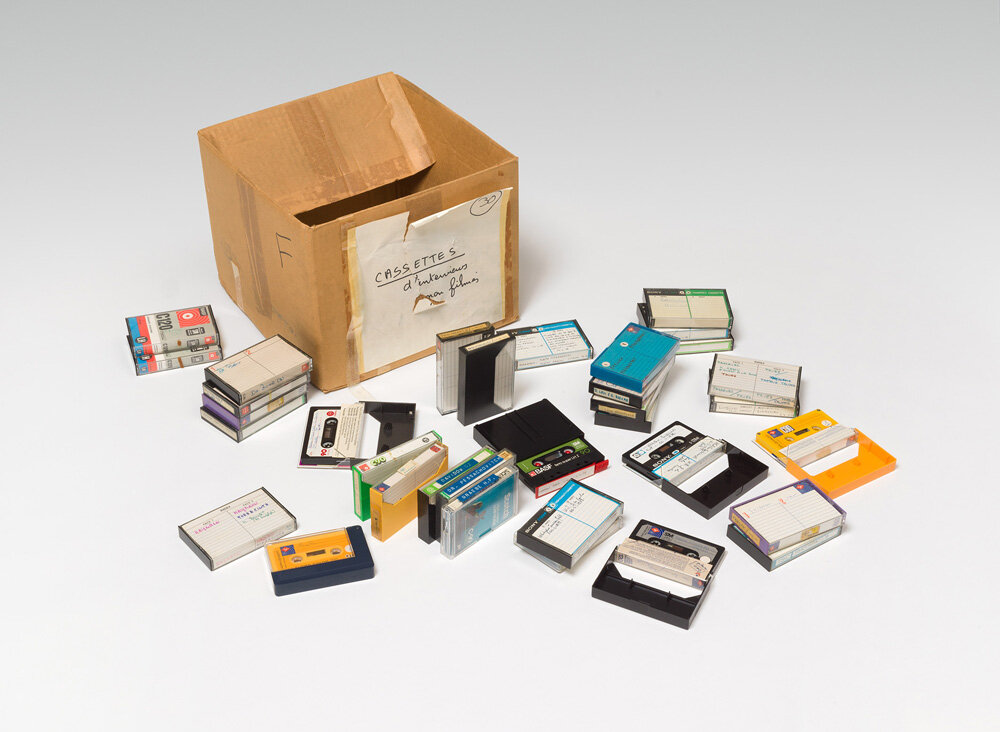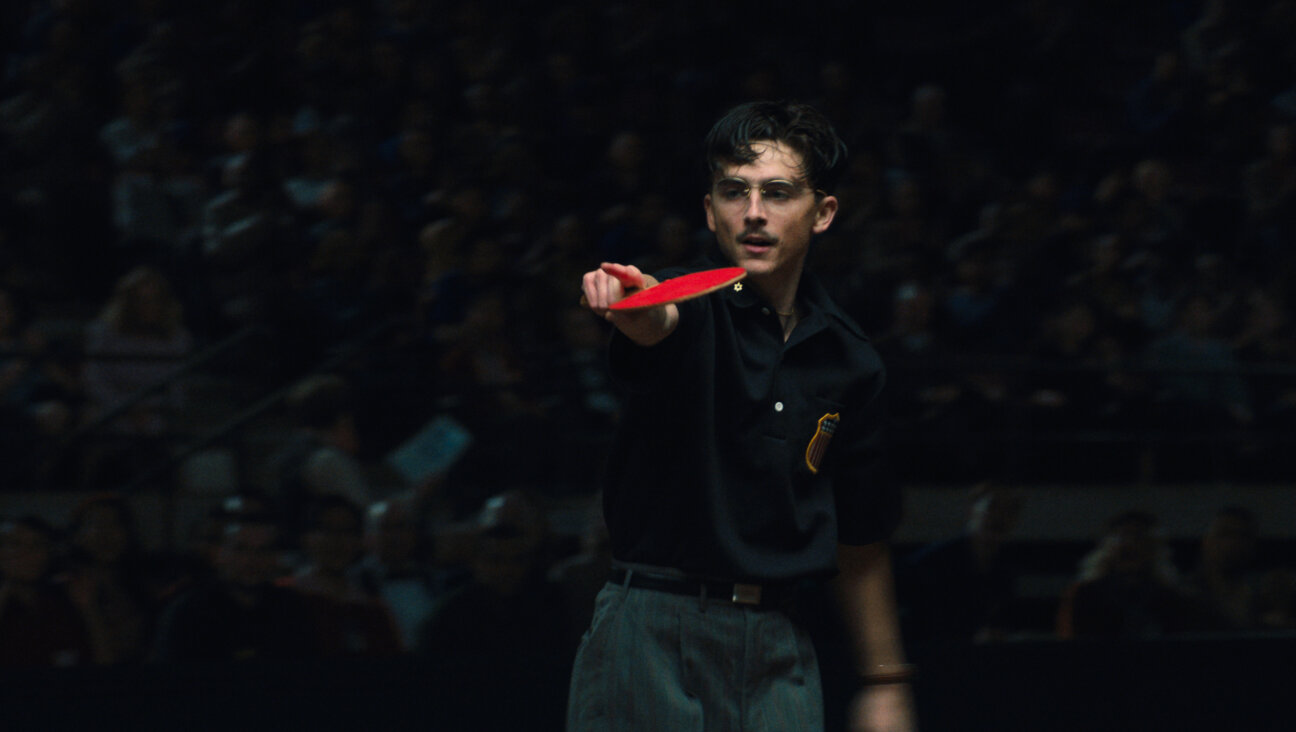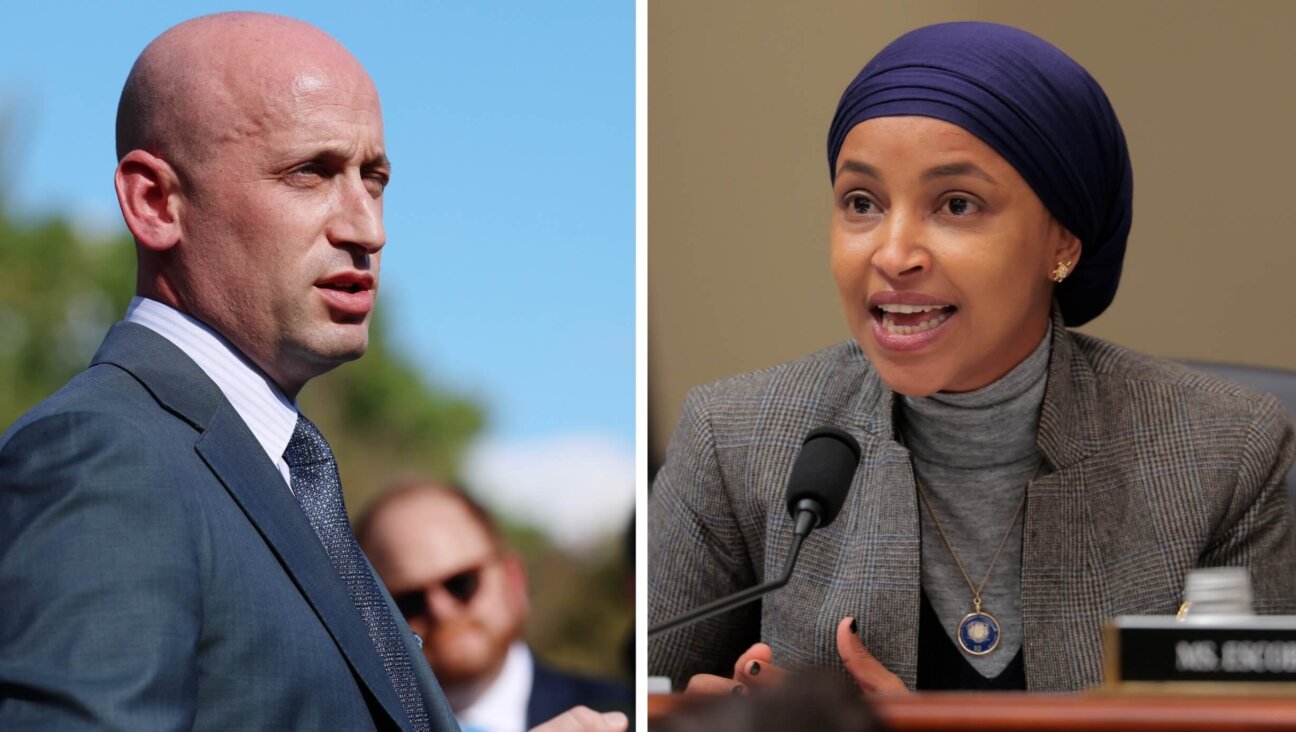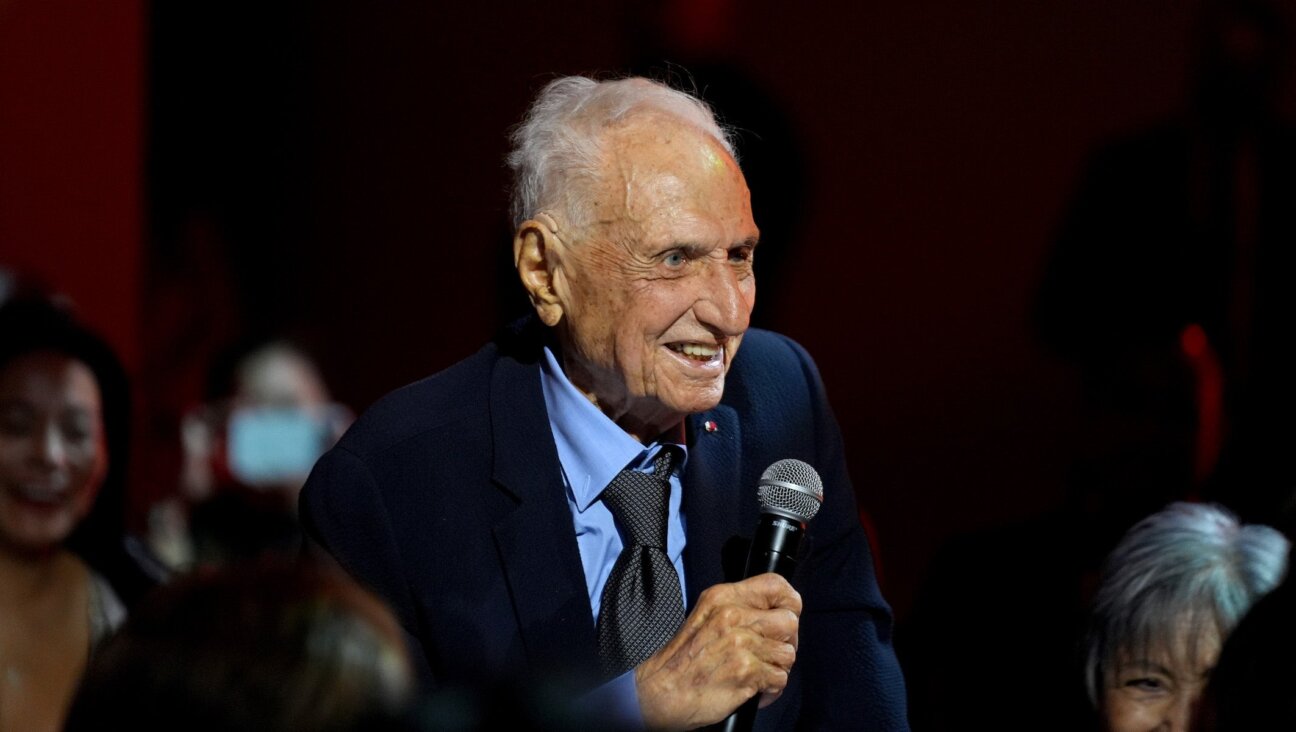Let’s Talk Hasidic in Hawaiian

Graphic by Angelie Zaslavsky
In the burgeoning U.S. economy of the 19th century, pioneering merchants ventured West to target the ambitious fortune-seekers of the Gold Rush. They went beyond California’s borders, supplying goods to the rapidly growing sugar and coffee plantations of Hawaii. With their foreign manners, the English and German Jewish merchants making the journey were easily identifiable.
These days, the islands’ most easily recognizable Jews are the handful of Chabad families spread across the Hawaiian archipelago. The islands of Maui, Kauai and Oahu — home to the first Chabad outpost in the Pacific — each host their own leadership. So does the largest land mass of them all, Hawaii, the Big Island. In 2007, a New Jersey native, Rabbi Avremel Chazanow, married a daughter of Rabbi Itchel Krasnjansky, who had launched Chabad of Hawaii in Honolulu in 1987.
“It was the first Hasidic wedding in the state of Hawaii,” says Rabbi Chazanow. now the Big Island’s shaliach or emissary. “That was just the beginning of my fame. The beginning and the end. I’m perfectly happy where I am.”
In the years since, Avremel Chazanow and his wife Rivky Chazanow (née Krasnjansky) have nestled into their own slice of paradise in Kona, where they run Chabad of the Big Island, which provides programming catered to a diverse audience, as well as kosher meals by delivery at the jewish big island website. A popular souvenir is their Hawaiian print yar-mulke, a steal at $8.
While the islands are home to a large number of Jews, no one knows exactly how many members of the tribe inhabit the Pacific islands. Chazanow estimates that 2,000 live on the Big Island alone.
“If you come to the Big Island, you want to see raw Hawaii,” Chazanow says. “Everything is completely ‘out there.’”
Each Shabbat and on any given Jewish holiday, Chabad of the Big Island, much like its counterparts around the world in far-flung destinations, attracts Jewish tourists, temporary and long-term residents, Jews and curious non-Jews alike. Many seek refuge from the pressures of life on the mainland. Some work in business. Others are retirees, snow and summer birds from the mainland. Of course, there are also counterculture hippies, freaks, adventurers, artists, yogis, free spirits, Israelis and more.
“There are very interesting people here from all sorts of walks of life… fascinating, awesome people,” says Rabbi Chazanow, who hosts a large Shabbat meal with his wife and children each week. “Every Friday night, I look around the table. There are people from all over and everyone has their own very different way of thinking and yet they are all happy here in Hawaii. And they come spend Friday night together with people they may not even meet back home. It’s a very beautiful. When it comes to Hawaii, all labels come for Shabbos, Rosh Hashanah, Yom Kippur. People don’t say, ‘Oh, this guy is Orthodox.’ It doesn’t matter anymore. It’s Hawaii.”
Indeed. Among those that make the island their home are farmers attracted by the island’s idyllic climate. Its fertile earth and weather conditions are prime for nurturing the island’s legendary Kona coffee, macadamia nuts, and an array of other delicacies, including exotic fruits, flowers and honey. Hawaii’s farmers include a well-known Hollywood celebrity, a New York physician and an under-the-radar entrepreneur who lives part-time in the Holy Land.
Actress and comedienne Roseanne Barr owns a 46-acre farm on the island’s Costa Brava, the Honokaa coast. Her macadamia nut and livestock farm was featured in a 2011 Lifetime reality show. The 16-part series, “Roseanne’s Nuts,” showcased produce gathered from the star’s organic garden for a Passover Seder. In another episode, Barr enjoyed a night out on the town with fellow Jewish comic and gal pal Sandra Bernhard. Her goal, as she told Oprah, is to “become totally self-sufficient and grow everything I eat.”
About five miles away from Barr’s farm stands the childhood dream of a congenial Brooklyn pediatrician, Dr. Mark Lew, who owns and operates a thriving practice in the Flatbush neighborhood of Brooklyn. Lew was born in a displaced persons’ camp following World War II to an Auschwitz survivor who met and married another survivor. His miniature Garden of Eden is a 30-acre spread he calls Manalulu Farm. The term combines Hawaiian and Hebrew: Mana is Hawaiian for spirit and Hebrew for the biblical manna from heaven. Lulu is Hawaiian for safe harbor. It is about as far away from Auschwitz as one can imagine.
With a long drive past green hills and tropical flowers, his charming hexagonal home is host to an eclectic art collection, a tiny stone-lined swimming pool, and a gourmet kitchen stocked with organic produce from his own fields. Fronting an ocean view, a quail hutch stands footsteps away from a picturesque tilapia pond inhabited by a variety of ducks and geese. Plots of asparagus, the focal point of Lew’s childhood fantasy to one day become a gentleman farmer, prosper in the tropical heat. Nearby graze a flock of sheep and free-range chickens. A hothouse on the property nurtures butterflies — Lew’s favorite gift to bring to celebrations and Jewish simchas on the island.

Image by Kurt Hoffman
Lew primarily lives and works in Brooklyn but returns to the island for two- to three-week stints every month or two. He co-sponsors a Hebrew school on the island taught by two young women from Crown Heights, and frequently hosts the Chazanow family for day visits. Verdant and well kept, Manalulu Farm is a page out of Martha Stewart Living. Neighbor Roseanne Barr has been an occasional guest, too; when she spotted Lew’s own collection of Chabad-made Hawaiian print yarmulkes, she spirited some away, Lew says.
“I didn’t think I’d be doing it this way but that’s the way the wind blows. You know children of Holocaust survivors are adaptable. That’s why their parents were survivors,” Lew says. “One of the reasons we chose Hawaii is because it is a very spiritual place. Why I chose Hawaii instead of Israel, who knows?”
Far to the south of Honokaa is Pahoa, where one of the world’s most active volcanoes is constantly creating new dirt, expanding the shoreline as lava flows into the sea. This is precisely where local resident Mordechai Needleman sees the hand of the divine actively revealed, tilling the soil. And in that rich, fresh cinder, and on his own two acres of undeveloped rainforest, Needleman senses the prophetic words of Isaiah 2:4, “turning swords into plowshares,” coming to life.
“The Middle East needs aloha,” says Needleman, using the local lingo for compassion and peace, chesed and shalom. “And the Third Temple needs to be ecological,” Needleman says, referring to the messianic vision of a rebuilt temple in Jerusalem. “Maybe that’s why Jews ended up here, so we can bring this medicine back to Israel.”
Needleman is a pseudonym. He said he preferred not to be identified for this article, but he maintains a goal of putting these ideals into practice and importing them to the Jewish homeland. He is an anomaly among the colorful characters living in this wilder side of Hawaii. Many of them gather each week at Uncle Robert’s, a local farmer’s market where local musicians hang out.
Many of the Jewish brethren living in the Pacific view the islands as an escape from the expectations of capitalism, from consumerism and excess. In the middle of the ocean, halfway around the world from Israel, they dissolve their Jewish identity into an amalgam of free-flowing new age spirituality, yoga and even pagan practices, such as a naked drum circle under a full moon. That outlook is celebrated at nearby Kalani, a wellness retreat center frequented by many Jewish guests.
Their world is a throwback to a simpler time, when people captured rainwater, showered at the beach or the local free public pool, and attended communal clothing-optional gatherings on the local black sand beach each Sunday. On weekdays there are tiki torch-lit freestyle jams at the local farmer’s markets, amidst artists selling their wares and farmers their fruits. These delights bear names like guavanana, ulu and sapote, a starchy Hawaiian staple also known as breadfruit. These bear a wide range of flavors resembling chocolate pudding, apple pie, sweet potato or lemon custard. As opposed to the “Babylon of the mainland,” Needleman says, these foods are bountiful and cheap.
Yet Needleman, who spends most of his time “off-island” in the Holy Land, remains a distinctly Jewish idealist. His greater mission, he says, is to bridge the Big Island and Israel, despite the fact that the two are almost halfway around the globe. Deeply attached to ritual, spirituality and Israel, Needleman, who is in his 40s, maintains an apartment in Jerusalem, where he returns for the major Jewish holidays.He says he needs both environments to achieve personal fulfillment
“What bothers me about normative Judaism is people forgetting about connecting to the Earth. The world has to wake up. That’s partly why I’m out here,” he says, noting the negative impact of early Westerners who carelessly brought foreign botanicals that now threaten the island’s ecology. “If you are ready, it can happen for you. It’s not about becoming another invasive species.”
After a successful career wholesaling college textbooks in Massachusetts, Needleman purchased his remote two-acre foothold in Hawaii almost two years ago. He sleeps in an impermanent structure, an eco-lodge with light walls on a raised foundation on stilts. There is no plumbing or electricity. But there is, as a migratory worker recently discovered, a pair of tefillin. When the young Ukrainian, hired to help Needleman clear land on his property, spotted the phylacteries, he asked to use them. The Ukrainian had previously immigrated to Israel and had served in the IDF. His connection to Needleman and the tefillin can be seen as the Jewish passion to cleave to any remnant of tradition even or especially in the most remote jungle. As Needleman points out, these seemingly random moments of meaning reveal themselves here nearly as frequently as the rain, which literally overflows Needleman’s buckets in sudden downpours.
In these wilds, Needleman considers his fellow Jewish “Rainbow warriors” and himself not as farming Jews, but as Jews who choose to engage in permaculture, reestablishing a connection embraced by the early kibbutzniks, but with a brighter future than the failing cooperatives.
“When you take care of the Earth,” Needleman says, “the Earth takes care of you.”
Lisa Alcalay Klug is an author and award-winning journalist. Visit her at www.lisaklug.com















